
By Rosemary Benton
The Rogue Element
Grim and uncertain times can seemingly serve as interesting creative fuel. As the world becomes embroiled further and further in the mounting crisis between Cuba and the US, Hollywood has scheduled a list of releases this year that look both critically and comically at current world affairs. This month the much-plagued movie Fail Safe, directed by Sidney Lumet and featuring a star studded cast of actors, was released. Boy, is this one a rollercoaster.

Based on the 1962 novel of the same name (initially released as a serial for the Saturday Evening Post) by Eugene Burdick and Harvey Wheeler, Fail Safe covers the topical issue of mutually assured destruction. It is supposed to be a deterrent to war — it's also the inevitable conclusion when our technology and policy fail us.
Picture this scenario: an unknown aircraft enters US air space and triggers preparations for a possible enemy attack, US bombers are sent to their holding (fail-safe) points on the Soviet borders. Everyone of importance is called in (select members of congress, the President, Air Force command and political advisors), but when Strategic Air Command in Washington learns that the craft is merely a commercial vessel off course, the situation is deescalated and the surveillance system within the Control Room is reset.
But an error causes an attack order to be sent to a group of bombers at their fail-safe point. Unaware of the error and gravely realizing the enormity of what an attack order means, the bombers nevertheless begin flying towards Moscow with the intention of razing it to the ground with their 40 megaton payloads. Back at Command, the error is spotted; all attempts are made to contact the bombers and call them back, but it's too late.

If this all sounds familiar then you have either seen Stanley Kubrick's Dr. Strangelove or: How I Learned to Stop Worrying and Love the Bomb (or read the book that inspired that film – "Red Alert" (1958) by Peter George aka Peter Bryant), or you, like me, just saw the premiere of Fail Safe. Both films are produced by Columbia Pictures, and initially both films were scheduled to be released in 1964 around the same date! The logic of this is baffling, and understandably it ruffled some feathers. The inside scoop is that Kubrick put a great deal of pressure on Columbia Pictures in order to have his film released at the beginning of the year decently spaced from the other.

Predictably, the eerily similar plots of Wheeler and Burdick's story compared to George's story resulted in a very public lawsuit – Kubrick and George vs Wheeler and Burdick, McGraw-Hill, Curtis Publishing Company, and Entertainment Corporation of America. The suit, initiated by George and Kubrick, claimed that Wheeler and Burdick lifted significant plot points from plaintiff Peter George's book. Evidently the matter was settled privately, as the American public is now able to see Fail Safe in many major theaters.
Initial Impressions
Despite their glaring story parallels, Fail Safe is a different animal entirely from Dr. Strangelove. It's hard to describe the experience of watching this film. The violence of the opening scene, wherein a veteran bomber pilot finds himself both observer and victim at a bullfight, sets the audience up with a baseline anxiety that grows and wanes, but never dissipates. The plot doesn't introduce the error (in this movie, caused by a machine rather than a person) until over 20 minutes into the movie. Prior to that we see haunting scenes that manage to capture intense raw emotions and family moments instrumental to defining our surprisingly complex and fascinating characters.

The suspense as the disaster gets wildly out of control builds relentlessly. For the audience, stuck in their seats with the knowledge that this is all very relevant to our country's current situation, there's an accompanying sense of angry futility. It's a hard truth that the general public (in the theater and on the screen) is blind to the national procedures set in place, and ultimately powerless to influence the decisions being made by the ranks of command. During the film's two and a half hour runtime this fury grew intense. By the end of the film I was actually teary eyed with a kind of writhing rage in my gut. It was especially fueled by the unbearably unfair price the Soviet and American civilian populations pay. Millions of people in both countries die minutes apart, or more accurately, are murdered. All for a technical error.
The Blame Game
The issue of blame and responsibility for a crime against humanity like the deployment of nuclear weapons is central to the plot in Fail Safe. As the cast discuss their options for the impending nuclear strike, the issue of how it could have happened in the first place is intensely debated by the characters. There are numerous people who keep saying that blame can't be assigned because the whole situation is an accident. No human hand sent the mission to the bombers streaking towards Moscow. A reset error caused the order to be delivered. It was always a possibility that the machines could malfunction. It's a risk of new technology that they could fail. As such everyone can be reasonably absolved of guilt. Absolving oneself of guilt and responsibility is a natural gut reaction in everyone when they are charged with making a mistake. But a crime against humanity? Of this magnitude? Someone has to take responsibility for that.

Even though it is explained earlier that he has no direct oversight of the checks and fail safes set in place to prevent such a tech error, the U. S. President (Henry Fonda) feels that the blame must lie with those at the highest peak of authority, and the actions he takes to address the situation reflect this. He verbally underlines this point in his angry statement near the end of the film to the Soviet premier that the blame for the dead lies with both men. Both men wield the destructive force of 20 megaton bombs as part of the unspoken detente of mutually assured destruction. Their use is ultimately the responsibility of the men in power. The President implores his Soviet counterpart, and the generals and senior officials on both sides, that they all must learn from this disaster to make sure it doesn't happen again. We don't hear what the Soviets have to say to this, and are left to wonder if they feel the same way about the shared responsibility and guilt.

But can people overcome the trap technology sets for us? Early in the film we see two WWII-veteran Air Force pilots playing pool and bemoaning the studiousness and "impersonal" attitudes of the new recruits grimly reading technical manuals at the tables next to them. Their conversation foreshadows the attitudes of many other characters. This film does an extremely good job of linking the fear of technology and the heavy responsibility of those who "control" it. Nearly all of the cast express, or hold firm to, the sentiment that technology is pulling people away from one another and will ultimately replace humanity in the resolution (and creation) of conflicts.
Another example of assigning blame to technology is in the Control Room when Congressman Raskob (Sorrell Booke) is given a tour of the new tech and an update on the emergency. He is disgusted and angry that a technical failure caused the orders to be sent, describing it as as humanity losing control of its inventions.

The scene revealing his feelings on the matter is very well executed. Congressman Raskob has just been shown how American satellites can monitor submarine movements and can zoom in nearly down to street level! He's also made aware that foreign surveillance is occurring within an alarmingly close proximity to the US shoreline. What disturbs him even more than all of this highly evolved (and very plausible) surveillance technology is that no one knows who is overseeing it. When he asks who double and triple checks the fail safes set up to monitor the machines, he is given different answers simultaneously: "The President" and "No one". That is profoundly disturbing, and Raskob knows it. He replies, "The only thing that everyone can agree on is that no one's responsible".
While Fail Safe offers a horrifyingly plausible solution to address the catastrophe shown in the film, neither the movie nor the best-selling book that the movie is based on offer any answers on how such a catastrophe could be avoided. Per the film, such an attack is the ultimate avalanche of events. It is the inevitable collapse of a shaky, hastily built structure rigged with cheap materials and patched with quick-fixes. Is it already too late to stop something like this from happening? Fail Safe asks this question, but suggests that there is no answer.
May sleep come easy to you tonight…


![[October 10, 1964] Drop The Bomb and We All Go Down (Sidney Lumet's <I>Fail Safe</I>)](https://galacticjourney.org/wp-content/uploads/2019/10/theend-672x350.jpg)
![[October 8, 1964] Through Time and Space (November 1964 <i>IF</i>)](https://galacticjourney.org/wp-content/uploads/2019/10/641008cover-672x372.jpg)

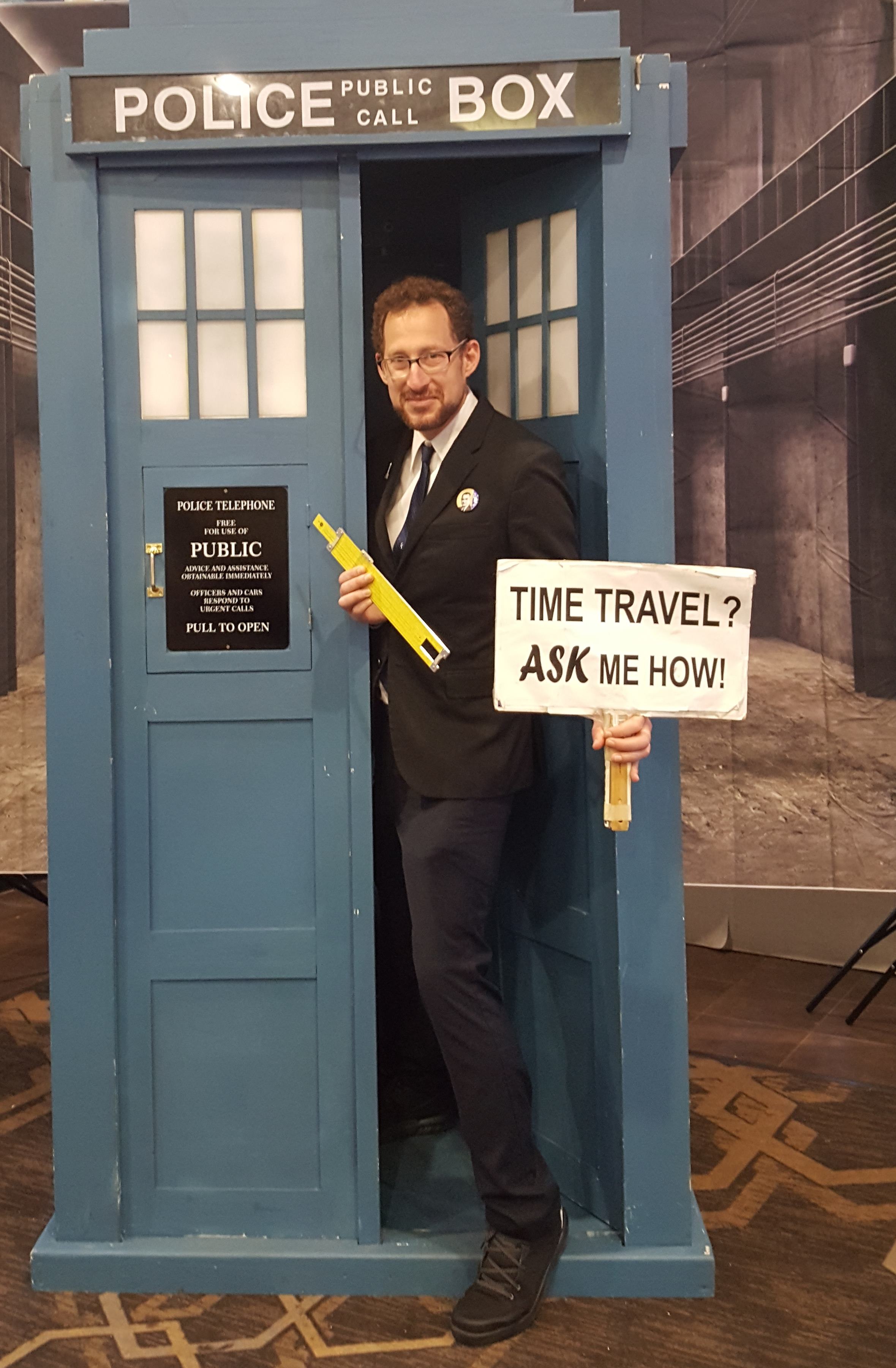





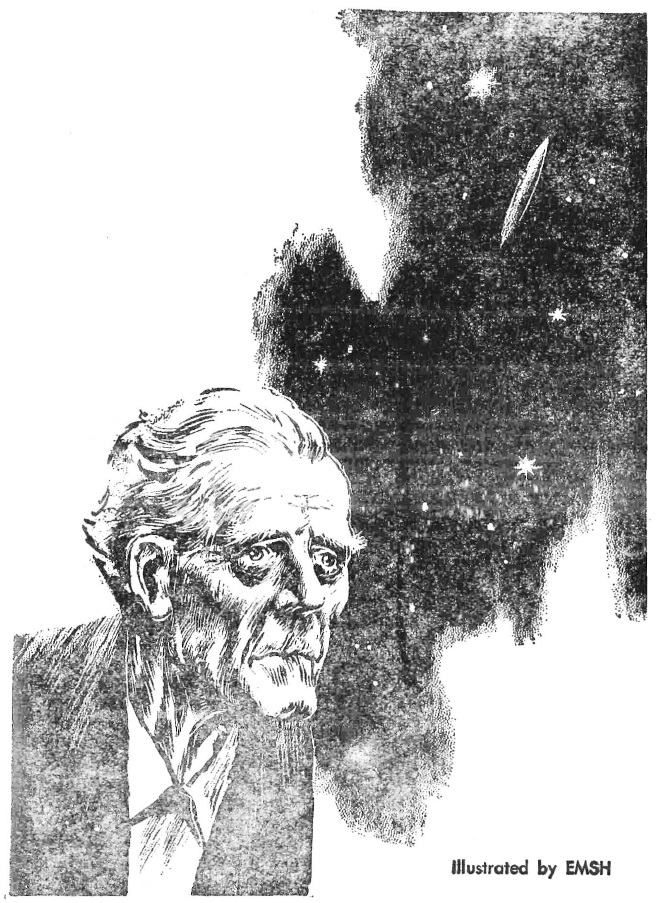
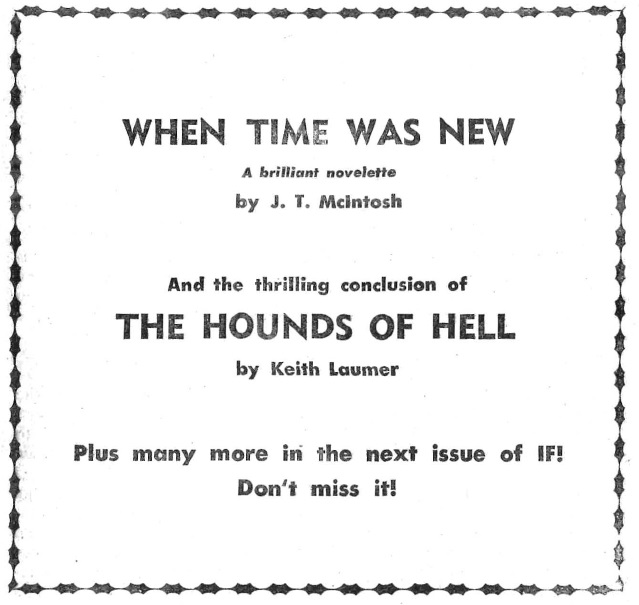

![[October 6, 1964] Up, Up and Away! Supersonic Aircraft Test Flights](https://galacticjourney.org/wp-content/uploads/2019/10/North_American_XB-70A_Valkyrie_on_the_taxiway_with_a_cherry_picker._Photo_taken_Sept_21_1964_the_day_of_the_first_flight_061122-F-1234P-017-672x372.jpg)











![[October 4, 1964] Are You Literate Enough to Vote in Louisiana?](https://galacticjourney.org/wp-content/uploads/2019/09/641004protest-672x372.jpg)

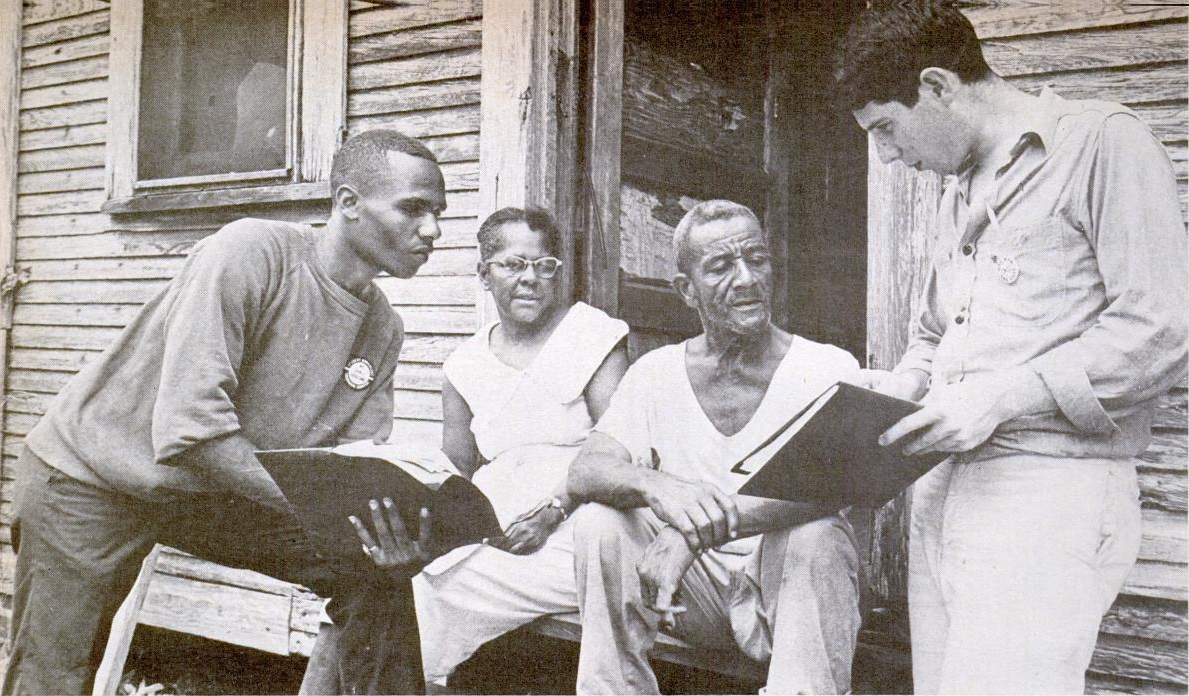
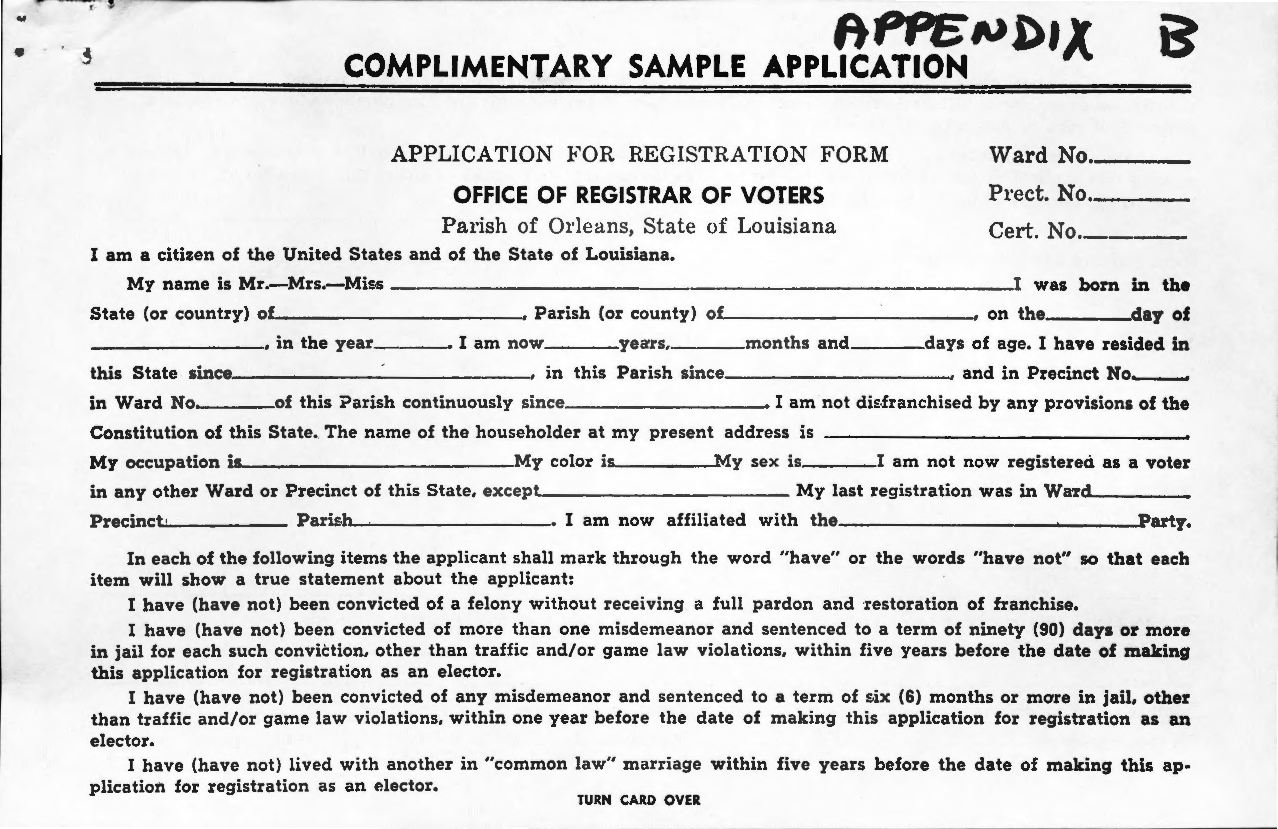





![[October 2, 1964] Terrestrial Adventures (October 1964 <i>Analog</i>)](https://galacticjourney.org/wp-content/uploads/2019/10/641002cover-672x372.jpg)














![[September 30, 1964] San Francisco Arts Festival (Marantz Rocks the Plaza)](https://galacticjourney.org/wp-content/uploads/2019/09/mimetroupeubu.jpg)


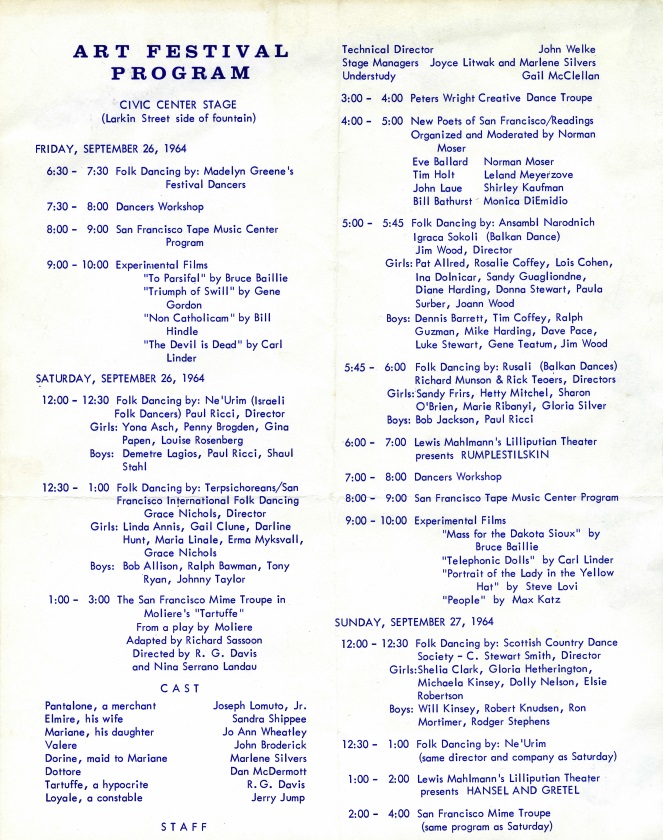


![[September 28, 1964] Revelation (<i>Science Fantasy</i>, September-October 1964)](https://galacticjourney.org/wp-content/uploads/2019/09/Science-Fantasy-Sept-Oct-1964-672x372.jpg)





![[September 26, 1964] A Mystery Mastermind Double-Feature: The Ringer and The Death Ray of Dr. Mabuse](https://galacticjourney.org/wp-content/uploads/2019/09/hexer-499x372.jpg)




 Der Hexer (The Ringer) is the twentieth Edgar Wallace adaptation produced by Rialto Film and one of the best, if not the best movie in the series so far. The Ringer is a pure delight and a distillation of everything that has made the Edgar Wallace series so successful. The balance of humour and thrills is just right and The Ringer will have you both rolling on the floor with laughter and on the edge of your seat with suspense. There are nefarious crimes, a mysterious figure – for once not the villain – whose true identity is not revealed until the final reel and a twisting and turning plot that still has a twist or two in store, even after the Ringer has been unmasked.
Der Hexer (The Ringer) is the twentieth Edgar Wallace adaptation produced by Rialto Film and one of the best, if not the best movie in the series so far. The Ringer is a pure delight and a distillation of everything that has made the Edgar Wallace series so successful. The balance of humour and thrills is just right and The Ringer will have you both rolling on the floor with laughter and on the edge of your seat with suspense. There are nefarious crimes, a mysterious figure – for once not the villain – whose true identity is not revealed until the final reel and a twisting and turning plot that still has a twist or two in store, even after the Ringer has been unmasked. The Ringer is based on Edgar Wallace's 1925 novel The Gaunt Stranger and its 1926 stage version The Ringer, though the literal translation of the German title would be "The Witcher". It's certainly apt, for the titular character is not just a master of disguise, but also has nigh sorcerous abilities to evade Scotland Yard's finest.
The Ringer is based on Edgar Wallace's 1925 novel The Gaunt Stranger and its 1926 stage version The Ringer, though the literal translation of the German title would be "The Witcher". It's certainly apt, for the titular character is not just a master of disguise, but also has nigh sorcerous abilities to evade Scotland Yard's finest.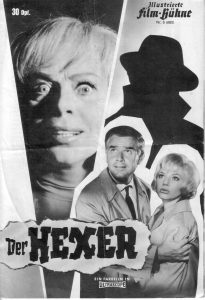 Unbeknownst to the killers, the murdered woman was Gwenda Milton, the younger sister of Arthur Milton, the vigilante known only as the Ringer for his uncanny ability to disguise himself as anybody he pleases. Years ago, Arthur Milton had given up his career of vigilantism and retired to Australia, far beyond the reach of the British law. But now he is back to take revenge on the murderers of his sister. Of course, both the villains and Scotland Yard are only too eager to capture the Ringer. There is only one problem. No one knows what he looks like.
Unbeknownst to the killers, the murdered woman was Gwenda Milton, the younger sister of Arthur Milton, the vigilante known only as the Ringer for his uncanny ability to disguise himself as anybody he pleases. Years ago, Arthur Milton had given up his career of vigilantism and retired to Australia, far beyond the reach of the British law. But now he is back to take revenge on the murderers of his sister. Of course, both the villains and Scotland Yard are only too eager to capture the Ringer. There is only one problem. No one knows what he looks like.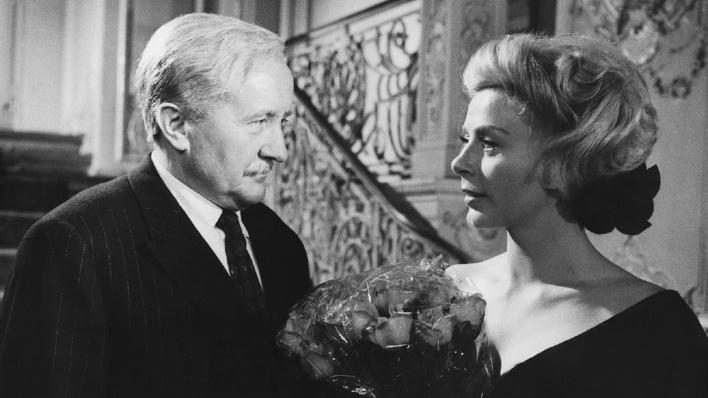

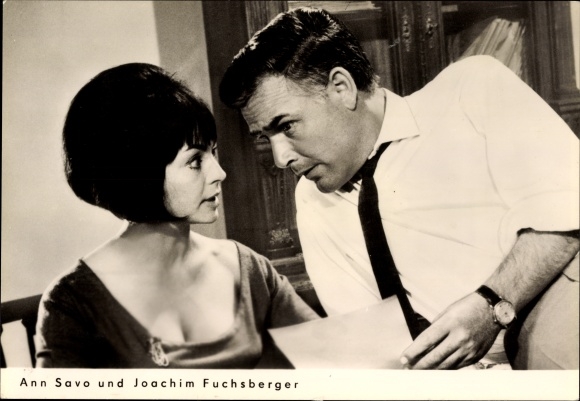
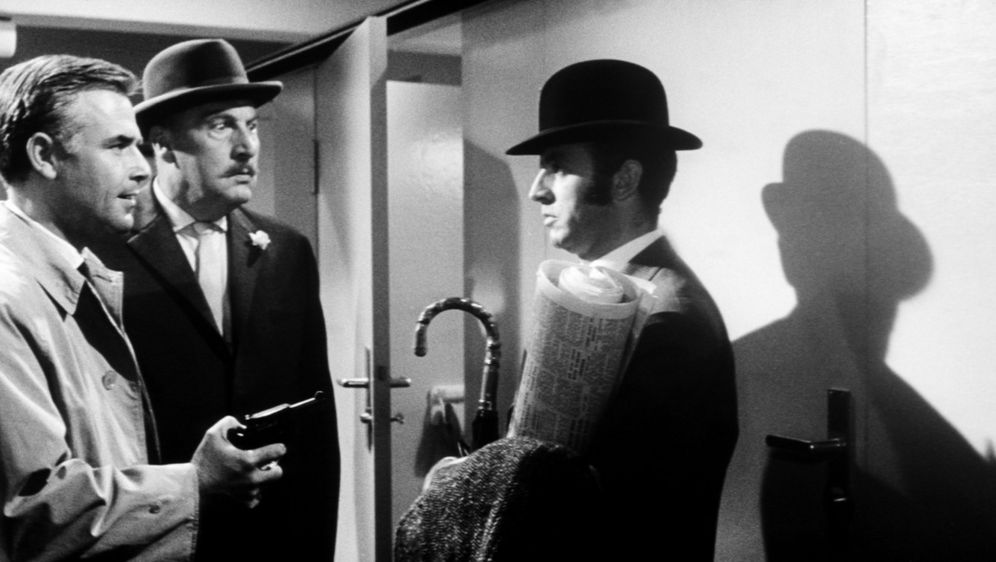

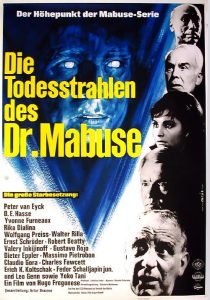 Unfortunately, the same cannot be said for the latest movie in the other great West German thriller series. For while the Dr. Mabuse series has been very good at reinventing itself in the five movies made post WWII (plus two made during the Weimar Republic) so far, the latest instalment Die Todesstrahlen des Dr. Mabuse (The Death Ray of Dr. Mabuse) shows definite signs of the series going stale.
Unfortunately, the same cannot be said for the latest movie in the other great West German thriller series. For while the Dr. Mabuse series has been very good at reinventing itself in the five movies made post WWII (plus two made during the Weimar Republic) so far, the latest instalment Die Todesstrahlen des Dr. Mabuse (The Death Ray of Dr. Mabuse) shows definite signs of the series going stale.
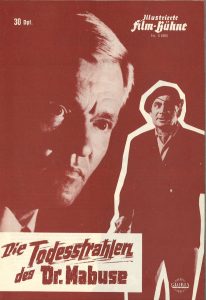 Not long after Pohland's disappearance, Anders is given a new assignment – to investigate spy activities in Malta, where a scientist named Professor Larsen is working on an invention that will change the world. And that invention just happens to be a death ray. Anders no more thinks that this is a coincidence than the audience does. So he hastens to Malta, taking along Judy (former Miss Greece Rika Dialina), one of his many girlfriends, to pose as a newlywed couple on their honeymoon.
Not long after Pohland's disappearance, Anders is given a new assignment – to investigate spy activities in Malta, where a scientist named Professor Larsen is working on an invention that will change the world. And that invention just happens to be a death ray. Anders no more thinks that this is a coincidence than the audience does. So he hastens to Malta, taking along Judy (former Miss Greece Rika Dialina), one of his many girlfriends, to pose as a newlywed couple on their honeymoon.
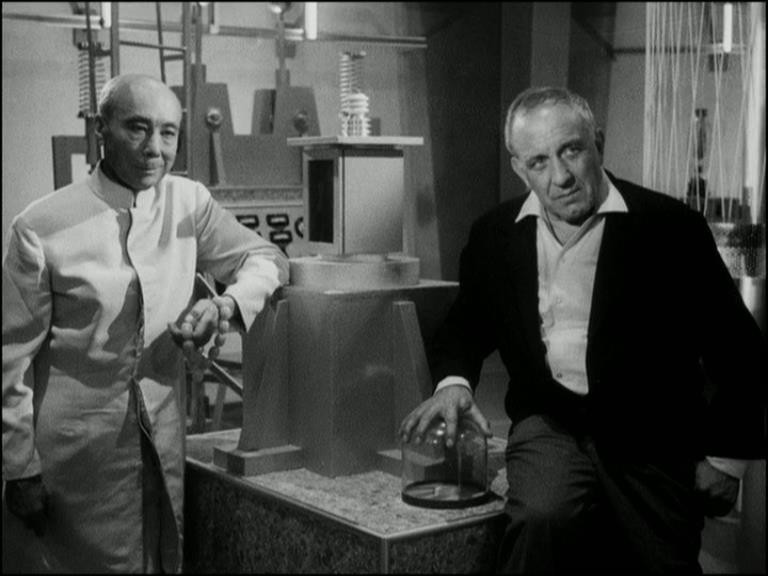
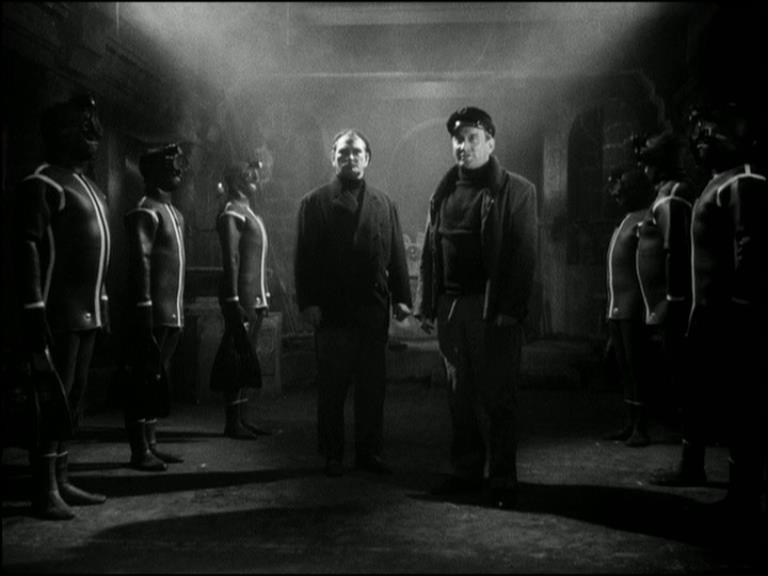

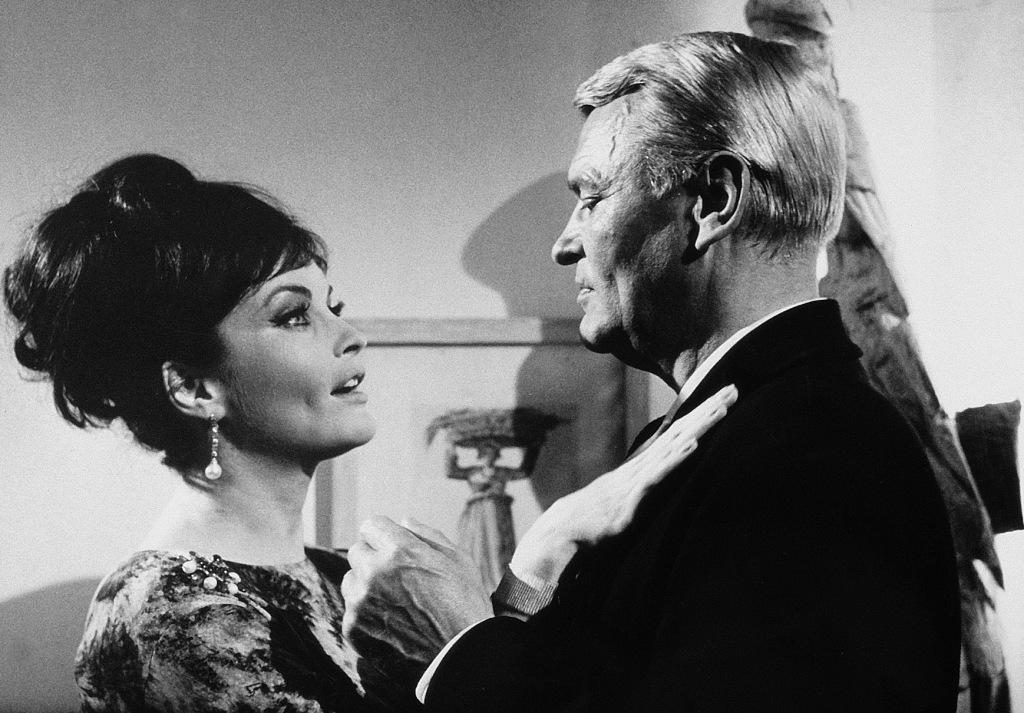
![[September 24, 1964] Looking Backward (October 1964 <i>Fantastic</i>)](https://galacticjourney.org/wp-content/uploads/2019/09/fantastic_196410-3-383x372.jpg)














![[September 22, 1964] Fall back! (October 1964 <i>Fantasy and Science Fiction</i>)](https://galacticjourney.org/wp-content/uploads/2019/09/640922cover-672x372.jpg)



